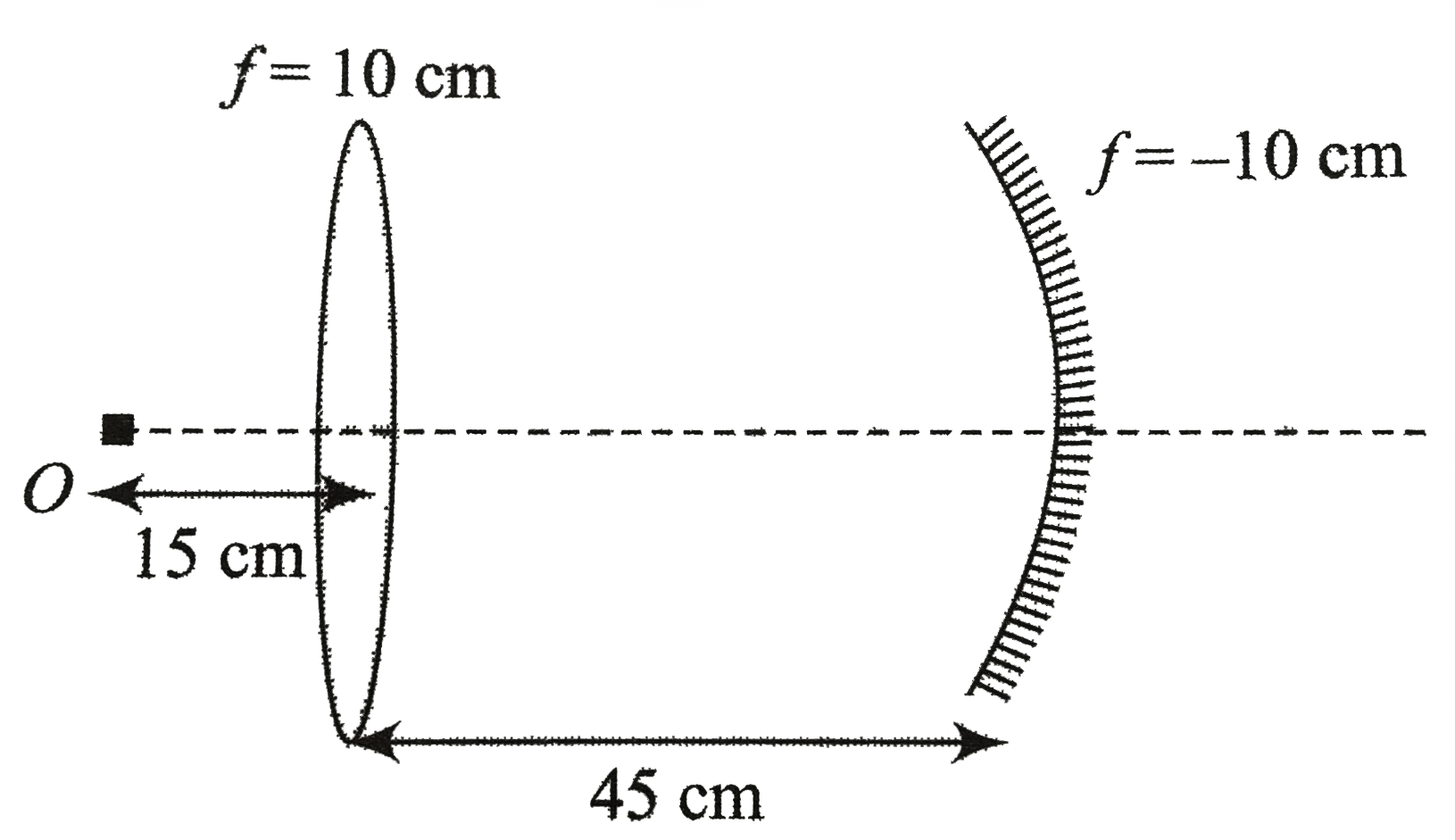Figure shows a point object and a converging lens. Find the final image formed.

1v−1u=1f
1v−1−15=110
1v=110−115=130
v=+30cm

Topper's Solved these Questions
- GEOMATRICAL OPTICS BOOK - RESONANCE ENGLISHCHAPTER - GEOMATRICAL OPTICS EXERCISE - Problem
33 Videos
- GEOMATRICAL OPTICS BOOK - RESONANCE ENGLISHCHAPTER - GEOMATRICAL OPTICS EXERCISE - Exercise-1
141 Videos
- EXPERIMENTAL PHYSICSBOOK - RESONANCE ENGLISHCHAPTER - EXPERIMENTAL PHYSICSEXERCISE - PART -II
10 Videos
- GRAVITATIONBOOK - RESONANCE ENGLISHCHAPTER - GRAVITATIONEXERCISE - HIGH LEVEL PROBLEMS
16 Videos
Similar Questions
Figure shows a point object and a diverging lens

Find the final image formed.
View SolutionIn Figure., find the position of final image formed.

View SolutionIn Figure. , find the position of final image formed.

View SolutionA convex lens is made up of three different materials as shown in the figure. For a point object placed on its axis, the number of images formed are

View SolutionAn illuminated object is placed on the principal axis of a converging lens so that real image is formed on the other side of the lens. If the object is shifted a little,
View SolutionIn the above question, if the rays were to converge between F and C of mirror, then find the nature of final image formed
View SolutionA diverging lens with magnitude of focal length 25cm is placed at a distance of 15cm from a converging lens of magnitude of focal length 20cm. A beam of parallel light falls on the diverging lens. The final image formed is.
View SolutionIf the focal length of objective and eye lens are 1.2cm and 3cm respectively and the object is put 1.25cm away from the objective lens and the final image is formed at infinity. The magnifying power of the microscope is
View SolutionA convex lens of focal length 20cm is placed coaxilly with a convex mirror of radius of curvature 20 cm. The two are kept 15 cm apart. A point object is placed 40 cm in front of the convex lens. Find the position of the image formed by this combination. Draw the ray diagram showing the image formation.
View SolutionIn the above question, if the rays were to converge beyond C, then find the nature of final image formed.
View Solution
